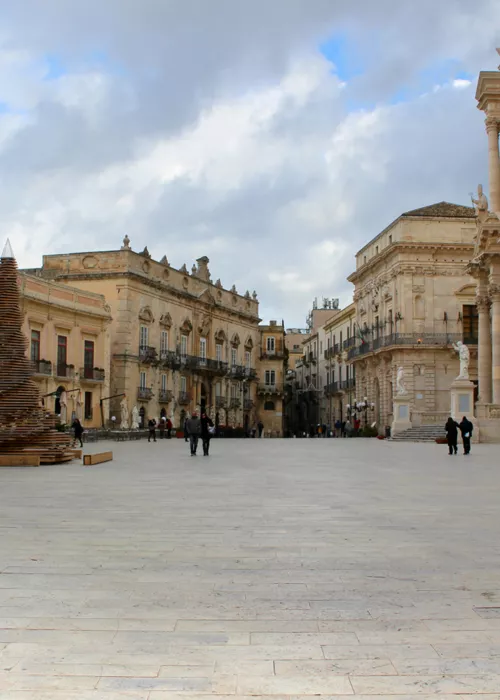From wearing red, to eating lentils: New Year's traditions in Italy
3 minutes
Whether tone on tone or combined with gold and silver, it is always the star of the table and of the outfit, even if only as an accessory; wearing red brings good luck, or at least that is what people say. This is just one of Italy's many New Year's traditions.
Here's everything you need to know to embrace 2023 in perfect Italian style amidst rituals, superstitions and gourmet treats at the table.
The origin of the tradition of wearing red on New Year's Eve

The tradition of wearing a red outfit on New Year's Eve has very ancient origins. In fact, it has its roots as far back as 31 B.C., in the time of Emperor Octavian Augustus when, on the occasion of the Roman New Year, both men and women used to wear red, as a symbol of prosperity.
Later on, the tradition became closely linked to underwear. In the Middle Ages, for example, the groin area was covered with a red cloth to ward off bad luck. And it is precisely underwear in this colour that holds sway during the festive season, a tradition that everyone interprets in their own way. For some, it should be worn inside out and put back on the right way round after midnight, a gesture that supposedly enhances the accumulation of positive influences. For others, on the other hand, the underwear with which the New Year was welcomed should be thrown away. The meaning is clear: away with the old, in with the new, quite literally. When in doubt, to ward off the start of an unlucky year, it is better to respect tradition.
New Year's lucky rites

Throwing away old things, or at least some of them, even if only symbolically, is another Italian New Year's tradition. This is a superstition, symbolising the abandonment of the past.
In ancient times, this ritual was practised by throwing old things out of the window. It is a custom especially popular in the South, but today it is far less common than it used to be: don't do it, it can be dangerous, unless you live alone in an isolated area. Bangers and fireworks have the same meaning, although they are now banned in many Italian cities: at the heart of New Year's rituals there is always the desire to welcome the new, focus positive vibrations on oneself, and chase away negativity. Also by making a lot of noise.
Cotechino and lentils, the good-luck combo

In a country that has gastronomy as its undisputed forte, there is no shortage of culinary traditions. On the evening of 31 December, cotechino (pork sausage) and zampone (pig's trotters) are two essential classics.
Cotechino is a typical dish from northern Italy - the one from Modena has the PGI denomination - but today it is eaten all over the country, especially during the festive season. The tradition of eating it on New Year's Eve relates to its nature: it is a fatty sausage, obtained from the pig, which according to Italian tradition is a symbol of abundance, fertility and spiritual strength, and therefore good luck. Lentils, also essential, always accompany the second course. Here again the reason is superstitious: they bring good luck, so much so that in some families there is the custom of serving them at the end of the meal, at the stroke of midnight, while for others they are eaten as a side dish. But why do these legumes bring good luck? The custom owes itself, once again, to the Romans who, on New Year's Eve, used to give a scarsella, or leather bag, that contained them, with the wish that they would turn into coins in the months to come.
Pomegranate, amidst the sacred and the profane

It is not only by eating lentils that one would become rich. The good-luck rites of the Italian New Year at the table are linked to everything that can be counted. Besides lentils, there is the custom of eating pomegranates, probably because of the abundance of seeds or the red colour.
In ancient times, the pomegranate was a plant that symbolised wealth and fertility. This is thanks to the Bible, where the fruit is mentioned as one of those that the exiles from Egypt would find in the promised land. Take note: it is also present in many sacred-themed paintings as a symbol of God's gifts. If you are a guest and want to give a special gift, bring a pomegranate plant, as there is no finer greeting.
The 12 Grapes of the New Year in Naples

More linked to local traditions is the custom of eating grapes in the final minutes before midnight - twelve, like the months of the year. This is an ancient Spanish ritual that had no trouble taking root in Naples and other southern areas during the years of Spanish rule in Italy.
Like lentils and pomegranate, grapes are also a wish for wealth because they can be counted and, in this respect, refer directly to coins.



















